Today is our last trip out on to the ice. WHOI is deploying their last ITP, Dave Meldrum is putting in his third SAMS-IMBS and Alice & Kristina are directing an ice-sampling team. The day starts out warm and sunny (OK, the air temperature is 2C. This is the Arctic after all).
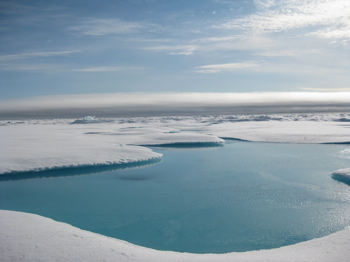
After the ITP hole is drilled, Sarah Zimmermann puts a CTDA research tool that is submerged in the water to measure conductivity (salinity), temperature, and depth. down the hole to profile the water under the ice. They are interested in the freshwater content of this water. To them, freshwater does not mean "drinking water" but instead water of lower salinity that comes from ice melting.

It is difficult to sample this surface layer from the ship because the ship is moving around and mixing this water up. One of the results to come out of the multi-year BGE project is that the freshwater layer is increasing in the Beaufort SeaThe Beaufort Sea lies to the north of Alaska and the Yukon and Northwest Territories.. The cause of this increase is not well-understood.
I have been on the LSSL for 3 weeks. The ship has been moving, breaking ice, rolling with waves and all the while the engines have been running. By stark contrast, the ice is quiet. We are moving -- this floe has drifted over 4 miles since yesterday afternoon -- but the motion is not perceptible. Ice feels firm underfoot, and today there is a crunch of ice and snow. We look ahead of where we walk: low spots, darker ice (where the dark water below is showing through) and melt pond edges are avoided. Attached is an ice safety guide that can give you an idea of how thick ice should be for various activities. As part of the deployment process, holes are drilled in the ice to be sure it is thick enough (see 17 July Journal Deploying an ITP? and 30 July Journal Ice Recon from Helo).
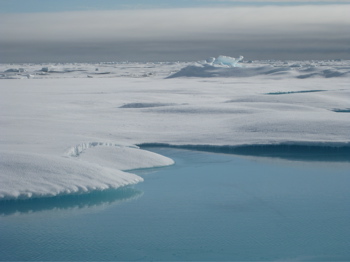
Here in the Beaufort SeaThe Beaufort Sea lies to the north of Alaska and the Yukon and Northwest Territories. we are seeing sea ice -- ice that is made from frozen ocean water. We are not seeing icebergs. IcebergsA floating body of ice that has broken away from a glacier. are formed from frozen fresh water and are formed on land. IcebergsA floating body of ice that has broken away from a glacier. are formed when chunks of ice break off form these glaciers and are found in the sea and on land. Attached is more information on icebergs from Environment Canada.
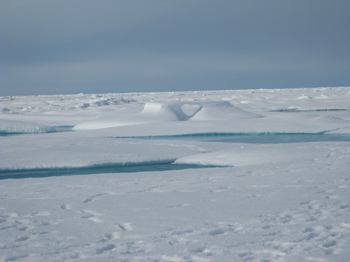
The isolation is dramatic. When I look back at the ship, I think of astronauts looking back at Earth.
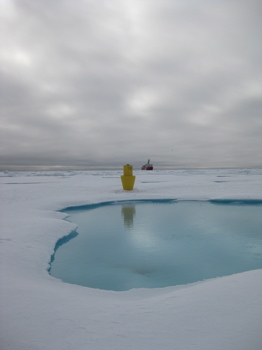
Our helicopter is their LEM.
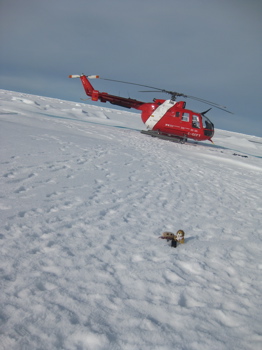
As our work ended, the clouds rolled in and the ice camp looked quite desolate from on board.
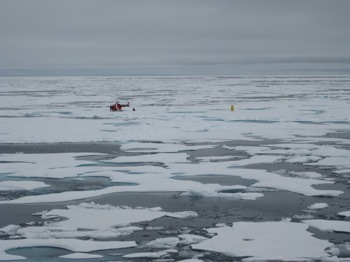
The next time we will be off the ship is in Kugluktuk on 21 August.
So long, for now, from the Louis!
| Attachment | Size |
|---|---|
| iceberg_factsheet.pdf376.18 KB | 376.18 KB |
| icesafetychart.pdf582.94 KB | 582.94 KB |


Comments